
Bf 108B
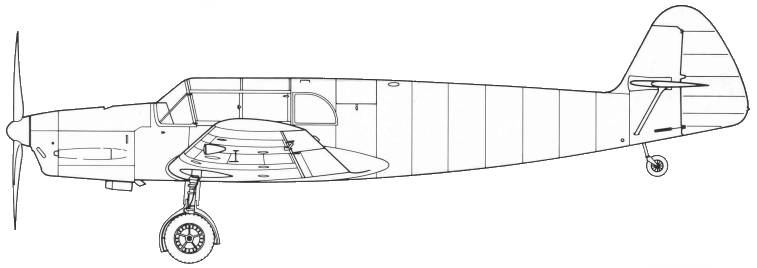
The Messerschmitt Bf 108 was designed initially to compete in the fourth Challenge de Tourism International.
The prototype first flew in June of 1934 and displayed the makings of a
thoroughbred from the beginning. Following tests at Rechlin, six were
delivered to the team for the competition. The best the Germans could
do was fifth place however the rules of the contest favored lighter
wood and canvas entries over the heavier but faster Bf 108. In November
of 1935 the improved B series was introduced. It was larger overall,
fitted with a revised canopy, tailplane and wing. A tail wheel replaced
the skid of the early models. With the rapid expansion of the Luftwaffe
during the late 1930's the Taifun was selected for military liaison
duties. Under the designation Bf 108B-2 the 108 went military, serving
as a staff liaison and transport within most of the active Luftwaffe
units. Apart from the deletion of the folding wing, this version was
essentially identical to the civil model. A total of 626 military 108's
were produced.
The Kit
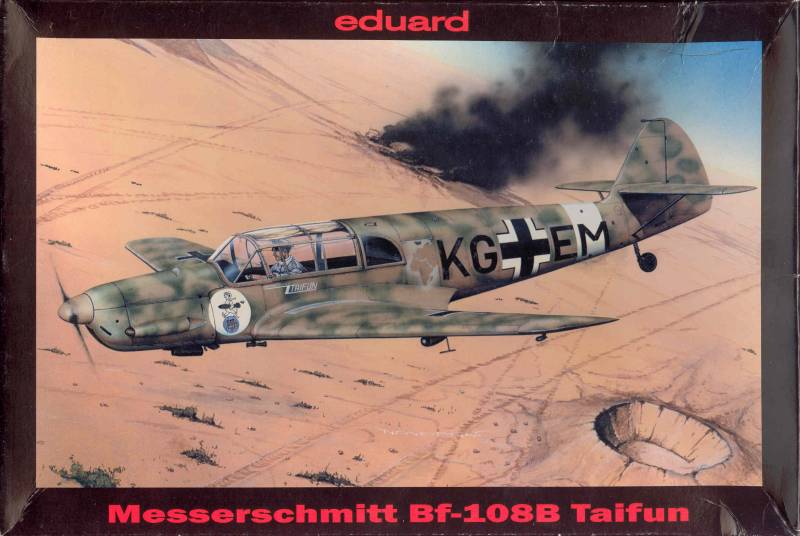
The Eduard kit comes in a top open two part box with a nice rendition of the subject on the top. Inside there are three bags, one with clear parts, one with one sprue and one with two. The bags are resealable similar to those used on their photoetch sets. The parts are molded in a light olive color and feature recessed panel lines and rivet and fastener detail. The panel lines are crisp and consistent and I found no surface defects on any of the airframe surfaces. I did not find any ejector pin marks that will show. The interior is quite complete and offers the option of the standard four place seating or three place with extra fuel and oil tanks located in place of half the rear seat. This is typical of the 108D model. The wing and tail parts trailing edge is a bit thick but will likely only bother those with AMS. The engine is quite complete as well and though mostly hidden the cylinders can be seen through the cowling. The instrument panel can either be covered with a decal or you can cut a printed set of dials and glue it to the back of the instrument panel. By my count there are 87 parts in light olive. See below.
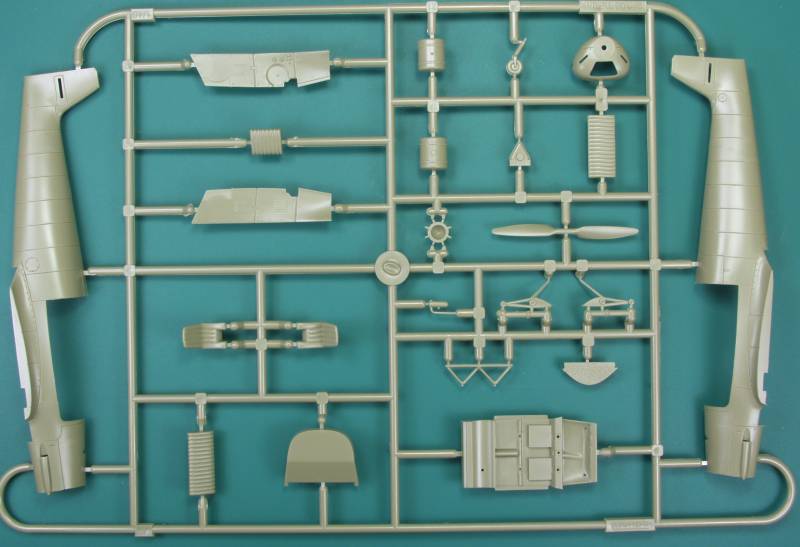
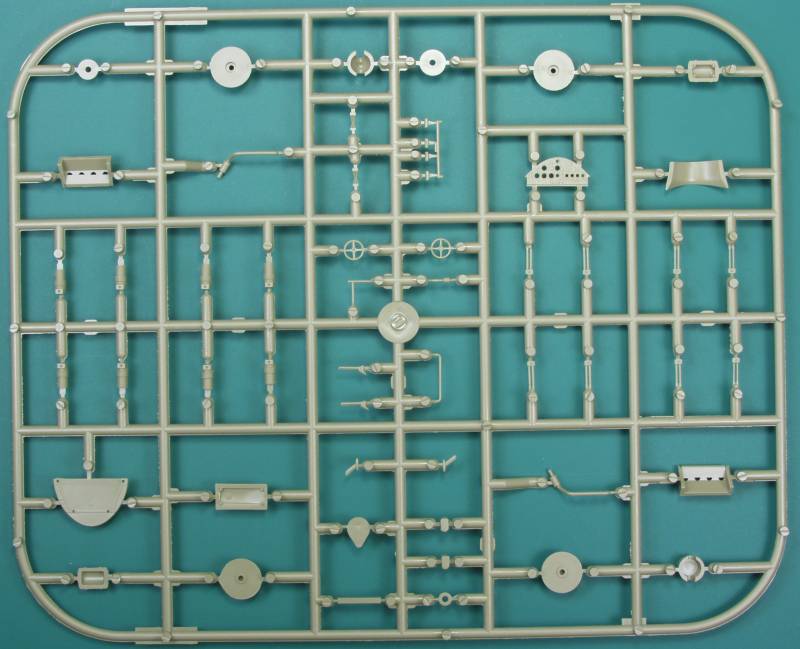
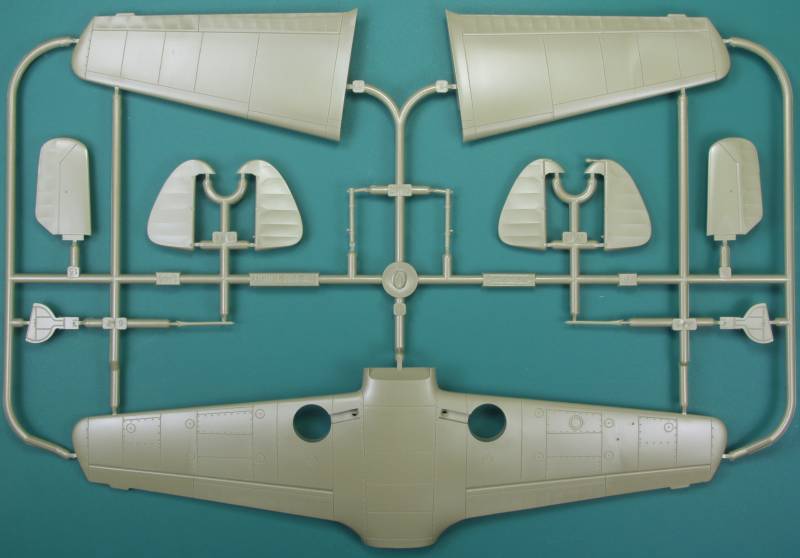
The clear parts are clear and thin and have nicely raised frames. There are a grand total of two. See below.
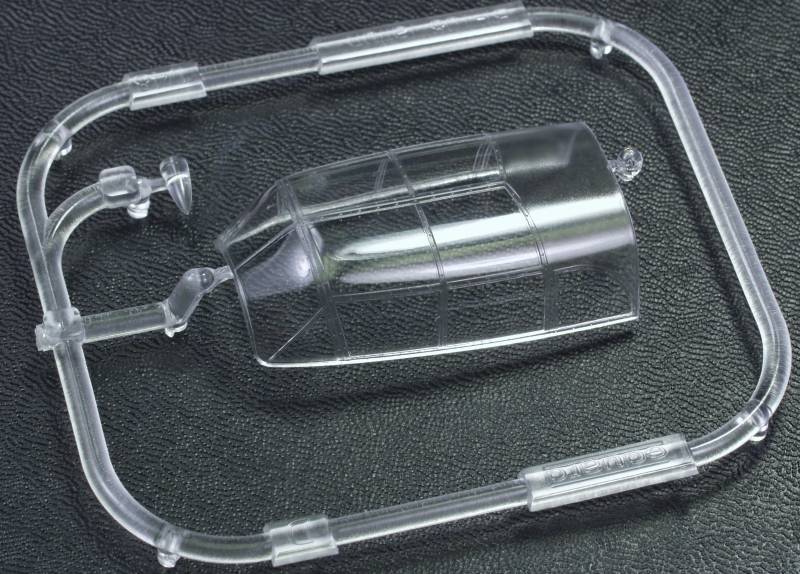
The decals include markings for two aircraft, are thin and in register and include the disassembled style swastikas. See below.
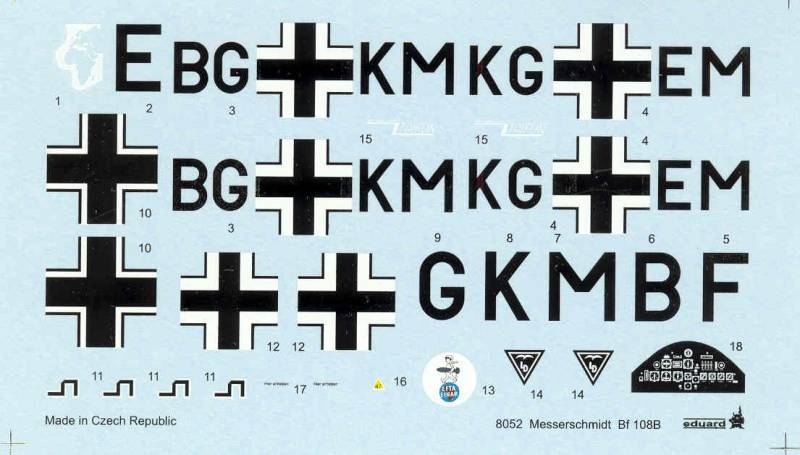
The instructions are printed in a wide page folded to form eight panels. The first panel has history, the second has the usual warnings and precautions, an icon chart, a color chart which lists colors in Tamiya, Revell, Humbrol, Testors and Gunze numbers, and a parts map. The rest of the panels except for half the last page, which is an ad for a camouflage mask set, are assembly steps. There is an errata page included to correct an error on the engine assembly in the original instructions. There is a second sheet, A4 sized and folded in half. One side has the painting and decal instructions for the two planes supplied and the other side has the instructions for the supplied canopy mask set.
After Market Goodies
Eduard makes a camo mask for this kit [XF 549] as well as a photoetch set [48392] and a mask set [EDUEX235].
Conclusions
This is a very nice kit of a significant aircraft. With the exception of some care required fitting the interior to the fuselage the kit gets good reviews else where and should be doable by most modelers with the exception of those who might chose this as their first kit. Recommended.
Links to kit build or reviews
Build / reviews can be found here, here and here.
References
Monogram Close - Up 5, Taifun by Thomas H. Hitchcock